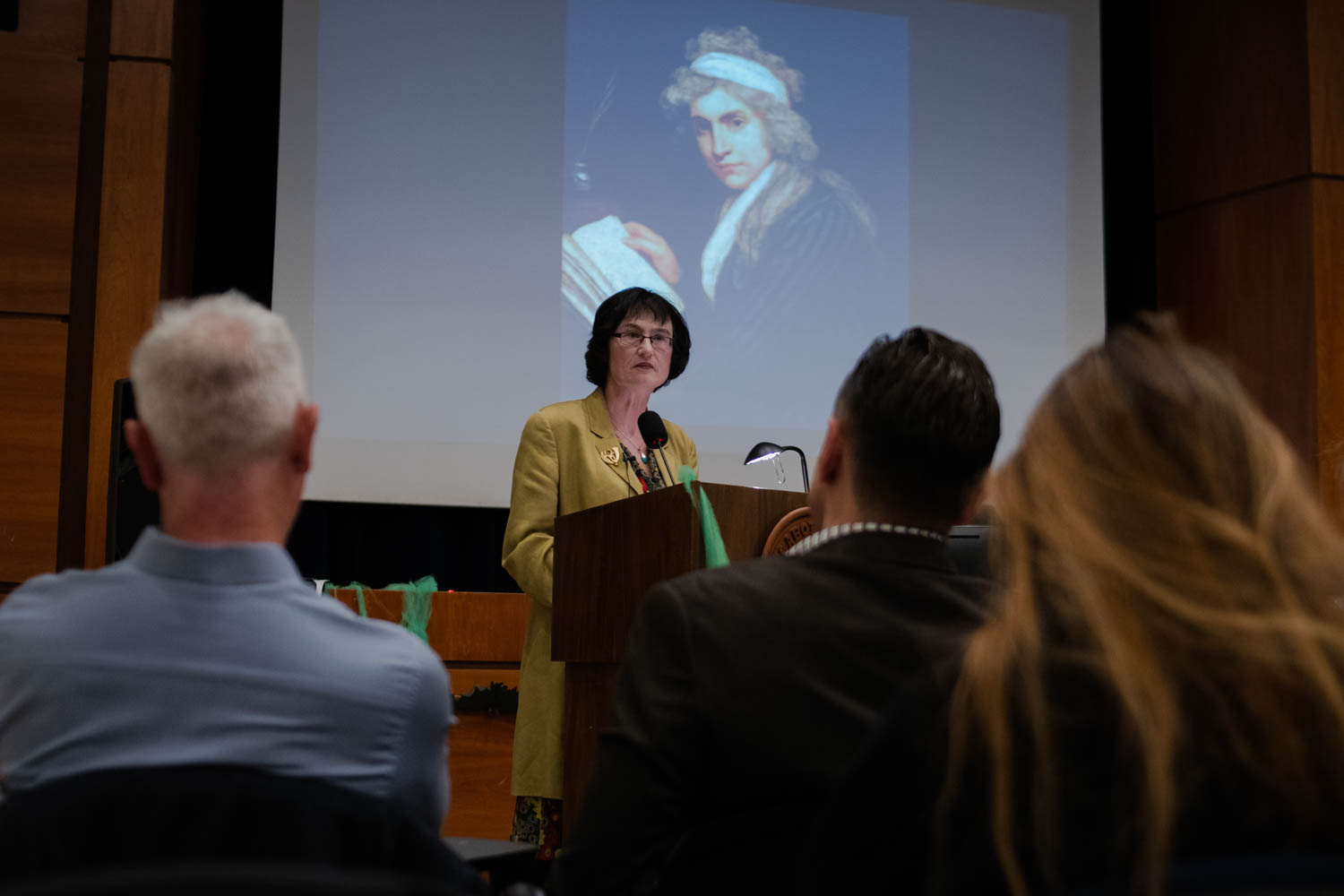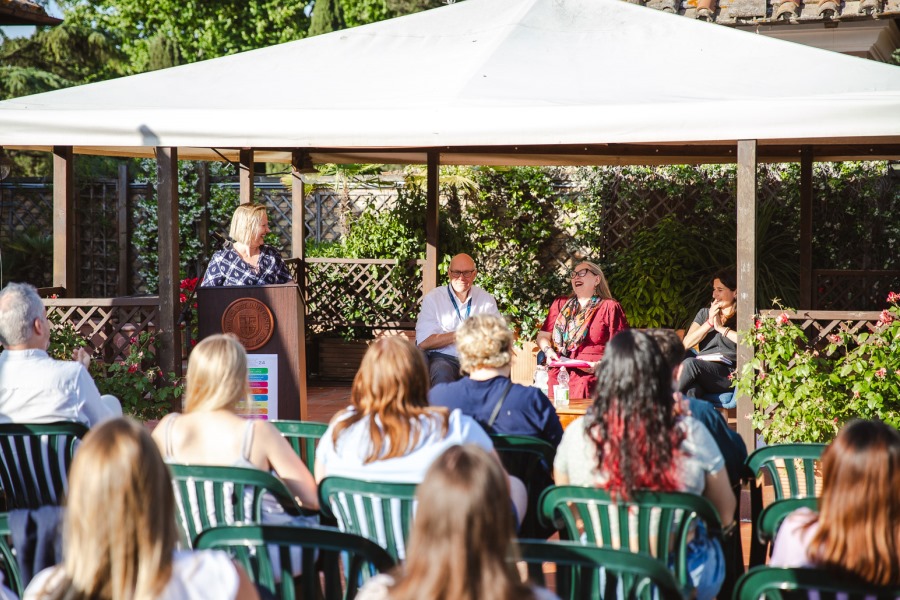The Girl Who Wrote Frankenstein: Fiona Sampson on Mary Shelley
“Mary Shelley’s is a life that was shaped, possibly limited, yet arguably also redeemed by literature. The true story of the precocious talent who produced two of our culture’s most enduring archetypes – the overreaching scientist Dr. Frankenstein, and the not quite human he creates – has much to teach us about the writing life and what it can achieve.” – Fiona Sampson
John Cabot University concluded Frankenreads, the month-long international celebration of the 200th anniversary of Mary Shelley’s Frankenstein, by hosting eminent British poet and writer, Fiona Sampson who discussed her latest book, In Search of Mary Shelley: The Girl Who Wrote Frankenstein.
The event, which took place on Halloween night and was co-sponsored by the Keats-Shelley House in Rome, kicked off the JCU English Department’s Literature Matters series.
Sampson, whose works have been translated into thirty-seven languages, has won numerous prizes for her writing. She has published twenty-nine books, including poetry collections and volumes on the writing process and the philosophy of language. She also contributes regularly to news outlets like The Sunday Times, The Guardian, The Irish Times, and The Independent. She is Professor of Poetry, and the Director of Roehampton Poetry Centre at the University of Roehampton where, in 2013, she also founded Poem, a quarterly international review.
In In Search of Mary Shelley: The Girl Who Wrote Frankenstein, Sampson explores the life of Mary Shelley (1797 – 1851), daughter of intellectuals Mary Wollstonecraft and William Godwin. Mary was brought up surrounded by poets, writers, and philosophers. At age 16, she eloped with poet Percy Bysshe Shelley.
By sifting through letters, diaries and records, Sampson aims to tell the real story of Mary Shelley, whose resilience and perseverance led her to write the canonical novel Frankenstein when she was only eighteen. Shelley wrote it while she had a small child, became pregnant and had another child during that same year, moved twice, faced two suicides in the family, and helped her stepsister have a child.
Watch Professor Sampson’s lecture.
The difficulties that Shelley encountered throughout most of her life did not halt her, according to Sampson, but spurred her on to write more, at a time when being a woman writer was quite an exceptional undertaking. “She is an amazing role model because she started writing Frankenstein when she was just a teenager, and finished it in just a year,” said Sampson. “Shelley did not have a male pseudonym like George Eliot. So publishers dealt with her ungenerously, kept on cutting her advances, and paying her less. And yet she kept going. She had to keep going, because she didn’t have any other means of supporting herself. It’s an astonishing story,” concluded Sampson.
Sampson dispelled the notion that Shelley is a one-book wonder, because she also wrote other substantial novels after Frankenstein, including The Last Man, which is considered the first dystopian novel.






